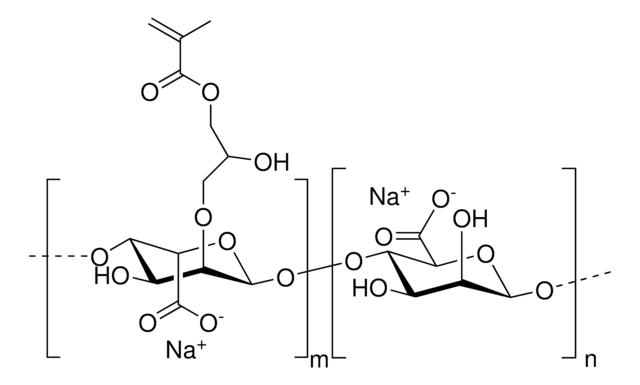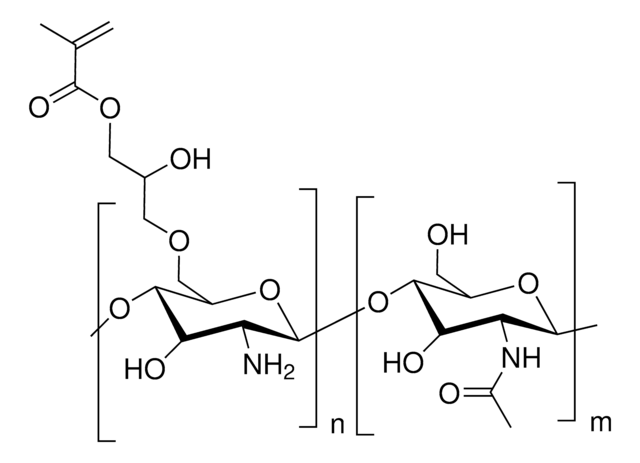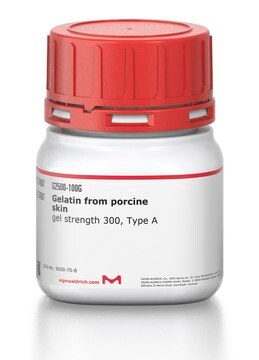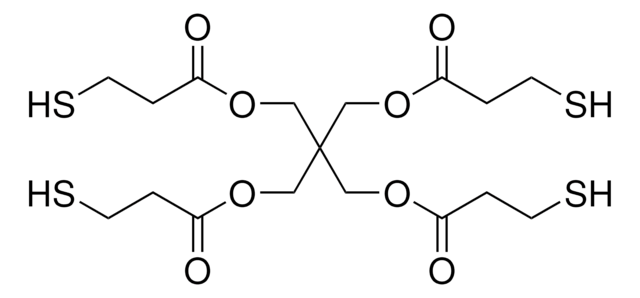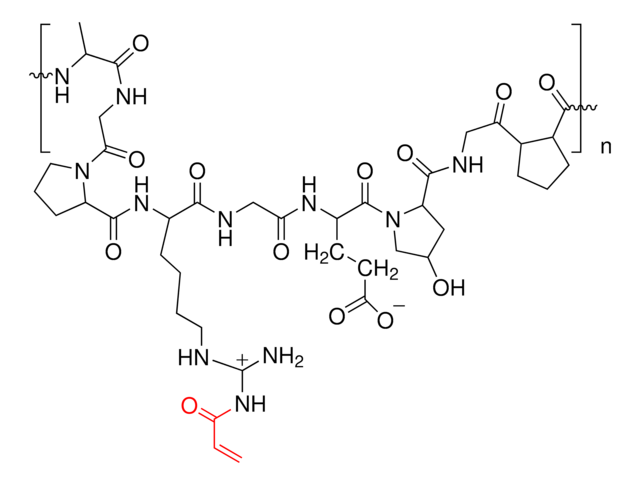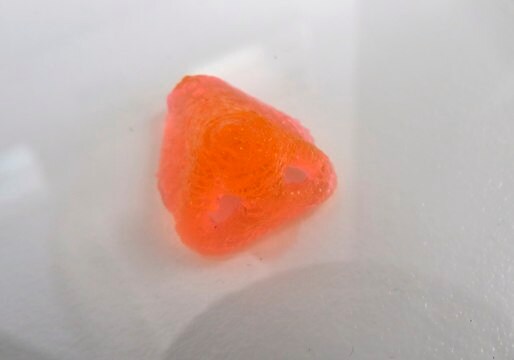924482
Methacrylated Alginate
Medium Viscosity, Low endotoxin
Synonyme(s) :
3D Bioprinting, AlMA, AlgMA, Alginate, Methacrylate, Sodium Alginate
About This Item
Produits recommandés
Description
Degree of Substitution: 15-25%
Niveau de qualité
Forme
(Powder or chunk(s) or fibers)
Impuretés
<10 CFU/g Bioburden (Aerobic)
<10 CFU/g Bioburden (Fungal)
<100 EU/g Endotoxin
Couleur
white to off-white
Adéquation
conforms to structure for NMR
Application
Alginate is an anionic polysaccharide that is widely used in pharmaceutical and biomedical applications due to its non-animal origin, low toxicity, biocompatibility, and biodegradability. Alginate hydrogels are commonly used to fabricate tissue engineering scaffolds, bioinks for 3D bioprinting, and nanocarriers for drug & gene delivery. Due to the thermal or photochemical crosslinking of the terminal methacrylates, methacrylate-functionalized alginate can be used to prepare hydrogels resistant to matrix degradation. Properties of the resulting hydrogel (e.g., stiffness, swelling ratio, rate of degradation) can be tuned by alginate molecular weight, degree of methacrylate functionalization, and crosslink density.
Code de la classe de stockage
11 - Combustible Solids
Classe de danger pour l'eau (WGK)
WGK 3
Point d'éclair (°F)
Not applicable
Point d'éclair (°C)
Not applicable
Faites votre choix parmi les versions les plus récentes :
Certificats d'analyse (COA)
It looks like we've run into a problem, but you can still download Certificates of Analysis from our Documents section.
Si vous avez besoin d'assistance, veuillez contacter Service Clients
Déjà en possession de ce produit ?
Retrouvez la documentation relative aux produits que vous avez récemment achetés dans la Bibliothèque de documents.
Notre équipe de scientifiques dispose d'une expérience dans tous les secteurs de la recherche, notamment en sciences de la vie, science des matériaux, synthèse chimique, chromatographie, analyse et dans de nombreux autres domaines..
Contacter notre Service technique